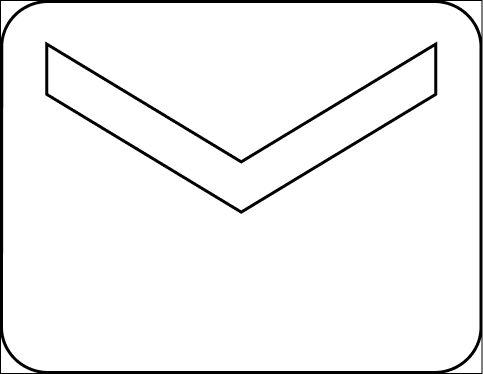Your cart is currently empty!

Recession Proof Your Business
Why keeping and growing your best customers delivers outsized returns
You’ve mastered the art of attracting new customers. Your customer avatars are dialed in, the buyer’s journey is mapped, and your hub-and-spoke strategy connects every touchpoint. You’re doing everything right, but…
Today’s economic uncertainty is impacting your marketing. And, even the best marketing can’t change a consumer’s need state. Nervous consumers tighten their belts. Scared prospects delay decisions. If demand doesn’t exist, marketing’s not going to fix it.
This means you’re watching your carefully crafted acquisition funnels struggle against forces beyond their control.
“We need more leads!” becomes the desperate default answer to every growth challenge. Or you stop. “We’ll just wait it out.”
Meanwhile, a solution is there. It’s hiding in plain sight.
“The companies that survive recessions are the ones that double down on their best customers while their competitors are cutting back.” ~ Seth Godin
Your customers are the other half of marketing that most businesses ignore. Your customers can be your saviour when times get tough. It’s not about choosing between acquisition and retention. It’s about understanding that retention is what transforms your acquisition efforts from an expense into an investment. This is doubly true when new customer acquisition becomes more expensive and less predictable.
Your best customers are the growth multiplier that’s hiding in plain sight. Relationship marketing is how you take advantage.
Best Customers: Why They Matter Most
“He will win who knows when to fight and when not to fight.” ~ Sun Tzu – The Art of War
Let’s get specific about who we’re talking about. It’s not all your customers. Remember what I said about marketing not being able to change a consumer’s need state. The same is true for relationship marketing. You aren’t important enough to most of them to break through, so don’t waste your time and treasure.
“So who am I talking to?”
You’re focusing on your best customers, and they are different. They aren’t just your biggest spenders. They’re the heavy category users who represent about 20% of your customer base but drive roughly 80% of your profitable growth. The exact percentages vary, but the principle holds true across industries.
What Makes the Best Customers Different
High need. They’re heavy category users who actively seek solutions in your space. When economic uncertainty hits, they don’t stop buying; they buy more strategically.
High value. They consistently generate significant revenue because they use your product or service extensively. The relationship delivers measurable returns that justify focused investment.
High knowledge. They have a deep understanding of your products and services, and they understand the competitive offers as well. They don’t need to be told how to; they need to be told why to.
Take one of our clients in professional services. When they identified their best customers, they discovered something interesting: these clients stayed 3x longer, purchased additional services 60% more often, and were largely immune to economic downturns because they depended on the service to run their business.
But the real revelation? They were spending 90% of their marketing budget trying to acquire new customers while barely investing in keeping and growing the ones who were already delivering outsized returns.
When acquisition gets harder and more expensive, relationship marketing focused on your best customers becomes your most reliable path to growth.
Let’s look at why these ‘best customers’ are so valuable.
The Five Ways Loyal Customers Drive Growth
Your best customers contribute to your business in five ways. Each one amplifies the others, creating what I call the “revenue amplifier.”
“The purpose of business is to create and keep a customer.” ~ Peter Drucker
1. Better ROI on Acquisition Cost
Business impact: Every additional purchase from an existing customer effectively improves your acquisition cost ROI.
Let me give you an example. If you spent $500 to acquire a customer who makes one $500 purchase, your ROI is 0%. But if that same customer makes two more $500 purchases over the next 18 months, your acquisition cost ROI is 200%.
One SaaS company tracked this religiously. Their average acquisition cost was $800 per customer. First-year customers had an average order value of $950, delivering a 19% acquisition cost ROI. But as customers stayed longer, something interesting happened. Their average order value increased over time through expanded usage and plan upgrades, which dramatically improved that initial acquisition ROI.
For more on this, I suggest you read, How Relationship Marketing Maximizes ROI.
2. Higher Lifetime Value
Business impact: Loyal best customers don’t just stay longer, they buy more often and are significantly more likely to purchase additional products and services.
When customers trust you and see consistent value, two things happen naturally. First, they return more frequently for repeat purchases. Second, because they trust you, they’re open to expanding their relationship with you. This means they’ll see your marketing and purchase additional products and services.
Customer relationship marketing generates organic growth within existing accounts.
3. Lower Service Costs
Business impact: Best customers cost significantly less to serve, improving your profit margins on every interaction.
Heavy category users understand your product or service deeply, which translates to fewer support tickets, shorter resolution times, and better questions when they do need help. They know how to get value from what they’ve purchased, reducing the hand-holding that new customers typically require.
By focusing your relationship marketing budget on the 20% who matter most, you also reduce your overall cost per dollar of revenue generated. Instead of broadcasting expensive marketing to everyone, you’re investing strategically in relationships that compound.
A financial planning firm we worked with found that their best clients required 60% fewer support hours while generating 40% more revenue per client than their average customer.
4. Referrals That Matter
Business impact: Best customers don’t just refer more people, they refer the right people; their referrals tend to have the same profile as they have.
Research published in the Journal of Marketing shows that referred customers are 16% more profitable over their lifetime than customers acquired through other channels. A Wharton Business School study found that referred customers have an 18% higher retention rate because they come pre-qualified by someone who understands your value.
Over time, these high-quality referrals increase the penetration of best customers in the customer base. They were 20%, but now they represent 22%, or 23%, or more.
5. Less Price Sensitive
Business impact: When value is clear and consistently delivered, price becomes less of a barrier. This is especially important during periods of economic uncertainty when trust matters most.
This doesn’t mean you can charge whatever you want. It means that when you do need to adjust pricing, loyal customers evaluate the change in the context of the total relationship, not just the transaction. It also means you don’t have to bribe them to stay. They see the value, they’ll pay full price.
The math is compelling: best customers don’t just buy more, they fundamentally change your business economics. Better ROI on acquisition costs, higher lifetime value, reduced service expenses, quality referrals, and price resilience create a compounding effect that transforms marketing into a growth engine.
But how do you actually activate these advantages?
The answer lies in treating your best customers differently from everyone else. While your competitors send the same generic messages to their entire database, you have an opportunity to deliver precisely what each customer needs, when they need it. This is where strategic personalization transforms your relationship marketing into a system.
Strategic Personalization in Relationship Marketing
The same customer avatar and journey mapping that powers your acquisition strategy becomes even more powerful post-sale, because now you have behavioral data to layer on top of your initial assumptions.
Personalization in relationship marketing isn’t using “Dear [First Name]” in emails. To be strategic, personalization is about delivering content, offers, and experiences based on who the customer is, and where they are in their journey.
Consider these behavioral triggers:
Post-purchase education. The second relationship marketing principle states, “The most crucial time is the beginning, which raises the importance of the post-purchase period. New best customers need different information than average customers because they’re heavy category users with higher expectations and deeper knowledge. Get the onboarding right for your best customers, and you set the foundation for everything that follows.

What is Relationship Marketing?
Relationship marketing is a customer-centric strategy focused on building long-term, profitable relationships with your best customers rather than pursuing one-time transactions. It concentrates marketing resources on the 20% of customers who drive 80% of business value through strategic personalization, and value delivery.
Usage-based offers. The third principle, “In established relationships, continually reinforce the decision to buy,“ and the fourth, “Good customers expect to be rewarded,” can be used to support usage-based offers.
If data shows a customer is approaching the limits of their current plan, proactively suggest an upgrade rather than waiting for them to hit a wall. Or equally, if a customer isn’t taking full advantage of the plan they purchased, proactively suggest a downgrade.
Activity recognition. Use the third principle, “In established relationships, continually reinforce the decision to buy,” to inform what you do to recognize activity.
When customers click a link in your email and visit a specific page, have a follow-up email ready with related resources. When someone contacts support, implement a plan to check in days later to ensure their issue was fully resolved. This embodies the fifth relationship marketing principle: the second most crucial time is when the relationship is at risk.
The key is relevance. Generic loyalty programs fail because they treat all customers the same. Strategic personalization succeeds because it acknowledges that even your best customers have different needs at different times.
Common Pitfalls in Relationship Marketing
Most businesses sabotage their retention efforts before they start. Here are the mistakes I see most often:
Treating all customers equally. Not all customers are created equal, and not all deserve the same level of attention. Focus your retention efforts on customers with the highest potential for growth and advocacy.
Building generic loyalty programs. Points and discounts might drive short-term behavior, but they don’t build long-term loyalty. Loyal customers stay because of value, not because of rewards.
Neglecting the post-purchase journey. The sale isn’t the finish line—it’s the starting line for the relationship. Many businesses go silent after the purchase, missing opportunities to add value and deepen the relationship.
Chasing volume over value. It’s tempting to focus on metrics like email open rates or social media followers, but what matters is whether you’re delivering value to the customers who matter most.
The Continuous Loop
When you keep and grow your best customers, three things happen that create a self-reinforcing cycle:
- They refer more high-quality prospects who match your customer avatar
- Your acquisition ROI improves because each new customer has higher lifetime value
- Your marketing becomes more refined because you better understand what resonates with your ideal customers
Let me show you how this plays out in practice.
A marketing consultancy started focusing its retention efforts on its best clients: manufacturers doing $2M+ who valued strategic thinking over tactical execution. Within 18 months:
- Month 6: Best clients started referring similar companies, reducing acquisition cost by 30%
- Month 12: New clients from referrals had 2x higher lifetime value than previous acquisitions
- Month 18: Their refined messaging in ads and landing pages attracted higher-quality prospects, improving return on ad spend
This creates a continuous loop: better acquisition → better customers → better retention → better referrals → better acquisition.
The businesses that understand this loop stop thinking about marketing as an expense and start thinking about it as a growth engine. Every dollar spent on acquisition becomes more valuable because you’re building a base of customers who multiply that investment through frequency, value, referrals, and longevity.
Action Plan: Getting Started
Ready to activate this growth multiplier? Here’s your roadmap based on proven relationship marketing principles:
Step 1: Identify Your Best Customers (Start Simple)
Don’t overthink this. Start with your top 10 revenue-generating customers from the past 12 months. Ask two questions:
- Need intensity: Which ones use your product/service most heavily and seem least likely to switch?
- Value generation: Which ones generate the most revenue with the least drama?
The customers who score high on both are your best customers. You can refine this analysis later, but this gives you a starting point within an hour.
If you have the data, you can use RFM analysis to segment your customers. RFM analysis scores your customers based on recency (R), frequency (F), and monetary value (M). This is a more objective way to identify your best customers. You can dig into it by reading this post: RFM Digital Marketing.
Step 2: Map Their Post-Sale Journey
Map out what your best customers need at purchase, 10 days, 30 days, 90 days, six months, and beyond. What challenges do they face? What outcomes do they want? What questions do they ask? What information brings value?
Step 3: Choose Your Relationship Marketing Channels
This isn’t about you, it’s about what works for your customers. Pick the channels that best serve them.
Email marketing works for nearly every business. Create segmented sequences that deliver value based on customer lifecycle stage and usage patterns. VIP newsletters, early access offers, and educational content that match their sophistication level.
Ad retargeting lets you stay visible with tailored messaging. Deliver value in the ads. Promote content about advanced features. Offer resources that will improve their experience. Assessments are a good fit here.
Private social media groups or communities create exclusive spaces where your best customers can connect with each other and access you directly. This works particularly well for B2B services and high-involvement products.
Managed communities provide a dedicated space where your best customers can connect, learn, and grow together. Whether hosted on your website or through specialized platforms, these communities deliver ongoing value through member discussions, exclusive content, and direct access to expertise.
These are four of the more obvious ways you can reward your customers. They work well for businesses with knowledge-based offerings and where customers benefit from peer learning and support. The key is matching the content and channel to your customer’s preferences, not your convenience.
Step 4: Implement One Strategic Touchpoint
Start with one behavioral trigger and build a system around it this quarter. Maybe it’s a 90-day success check-in for new customers, or a proactive outreach when usage patterns change.
Remember: good customers expect to be rewarded, but rewards don’t always mean discounts. Often, the most valued reward is relevant information delivered at the right time. This is why the 70:20:10 email content strategy works so well. 70% of the content is value-focused, 20% is curated value, and 10% is sales messaging that’s still targeted and therefore relevant.
Relationship Marketing – Your Growth Multiplier in Challenging Times
“Profit in business comes from repeat customers, customers that boast about your product and service, and that bring friends with them.” ~ W. Edwards Deming
When economic uncertainty makes every marketing dollar count, your best customers become your most strategic asset.
While your competitors burn through budgets chasing nervous prospects who aren’t ready to buy, you have a smarter path forward. The heavy category users who already know and trust you aren’t paralyzed by economic fear. They’re looking for strategic advantages. They need solutions, and they need partners who understand their challenges.
This is when relationship marketing proves its worth. Instead of broadcasting expensive messages to 100% of your audience, hoping 2% will respond, you’re investing strategically in the 20% who drive 80% of your results. The math is compelling: lower costs, higher returns, predictable revenue.
Your Zen Marketing framework acquisition strategy brought them in. Your relationship marketing strategy turns them into a valuable and reliable asset during the times when even the best acquisition marketing becomes more expensive and less reliable.
Every business owner I know is worried about the economic headwinds ahead. But the smartest ones realize that the customers they already have represent their most recession-resistant growth opportunity. When you master the art of keeping and growing your best customers, you don’t just survive uncertainty; you use it for growth.
What makes this even more powerful?
Once you have a relationship marketing plan in place, it boosts your growth in both the bad times and the good.
The best customer growth multiplier isn’t hiding anymore. The question is: while your competitors chase ghosts, what are you going to do about the goldmine you’re already sitting on?
Want to learn how I used relationship marketing to generate 20% growth on a $2 billion business? Use VIPChatwithJames.com to book a virtual coffee, and I will tell you all about it.
Related Posts
-
Recession proof Your Business
Your best customers are the growth multiplier that’s hidden in plain site.
-
Marketing for People Who Don’t Like Marketing
The businesses winning today are the ones who are using strategic personalization to turn resistance into revenue.
-
Everything Connects
In difficult economic times marketing fundamentals like the 7 Ps are more important than ever.
Author: James Hipkin
Since 2010, James Hipkin has built his clients’ businesses with digital marketing. Today, James is passionate about websites and helping the rest of us understand online marketing. His customers value his jargon-free, common-sense approach. “James explains the ins and outs of digital marketing in ways that make sense.”
Use this link to book a meeting time with James.

